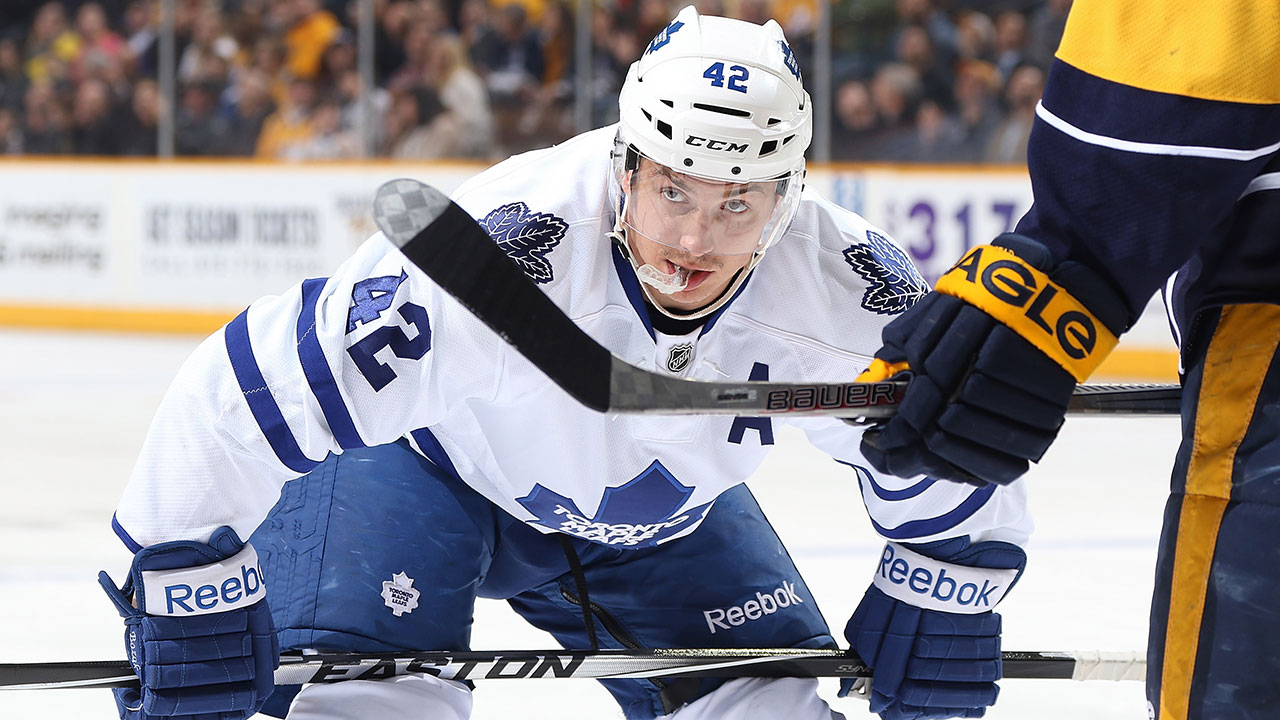The NHL is a tough league and the players with real value aren’t the ones who enjoy just one or two great seasons, but the ones who can keep putting up good seasons year after year. Sometimes, though, it can be hard to tell when an outstanding performance is a one-off, or when the bottom is going to fall out from under a previously reliable player.
Analytics can help. While they don’t offer the certainty of a crystal ball, they can make it easier to pinpoint players who exhibit troubling trends, thereby providing an early warning of an impending decline in production. The following are five players who may be bound for such a drop-off.
Tyler Bozak, Toronto Maple Leafs
Nobody is going to miss Phil Kessel in Toronto more than Bozak. Over the past five seasons, Bozak recorded 112 of his five-on-five points playing on a line with Kessel and managed just 11 points in his shifts without the goal-scoring winger. With Kessel, Bozak scored a mediocre 1.63 points/hour; without Kessel he tallied just 0.84 points/hour. For the sake of context, the latter figure equals the scoring rate of Jets’ defenceman Grant Clitsome over the past five seasons.
Special teams should help cushion the blow, assuming that Bozak continues to get significant power play time, but his even-strength numbers are likely to suffer in the absence of his regular winger.
Trevor Daley, Chicago Blackhawks
It really doesn’t take much more than a glance at the 31-year-old Daley’s shooting percentage to confirm that he’s likely bound for an offensive correction this season. He set a career-high with 16 goals in 2014-15, while shooting at an outrageous 14.2 per cent clip. Not only is that number more than double his career average (6.5 per cent) but it’s also well beyond what we generally think of as sustainable for any defenceman. Over the past five seasons combined, no NHL rearguard has scored more than 20 goals while posting a shooting percentage of 9.0 per cent or higher.
Jiri Hudler, Calgary Flames
At the age of 31, Hudler set career highs in goals (31), assists (45) and points (76). Unfortunately for both the individual and the Flames, those totals look a lot more like an aberration than a late-career breakout.
One factor is shooting percentage. Hudler’s 19.6 shooting percentage is significantly higher than his career average of 15.1 per cent and the difference between those two numbers is responsible for one-quarter of his goal production last year.
Another factor is what’s called individual points percentage. In 2014-15, Hudler picked up a point on 90 per cent of his team’s goals when he was on the ice. Over the three preceding years, that number was more like 70 per cent. There’s an element of randomness involved in whether a player picks up a point on his line’s goals, and in Hudler’s case it appears that last season he cashed in on a disproportionate amount of his line’s offensive production.
Kevin Klein, New York Rangers
Another old defenceman with a ridiculous shooting percentage, Klein is a hard player to avoid on a list like this. After scoring nine goals over his previous three seasons combined, he suddenly exploded with nine in 2014-15 at the age of 30. None of them were scored on the power play, and his shooting percentage (11.8 per cent) was more than double his career average of 5.0 per cent. More than one-third of the goal production in his 498-game NHL career came in 65 contests last season.
Klein’s assist production doesn’t look particularly stable either. From 2010-14, Klein recorded 23 primary assists and 22 secondary assists at even-strength. In 2014-15, more than two-thirds of his assists were secondary assists. These tend to fluctuate from year-to-year, especially for defencemen, and likely do not represent a real step forward for the player.
Mark Stone, Ottawa Senators
Stone has always had soft hands, but even for a one-shot scorer the numbers he managed in that department as a rookie are going to be hard to repeat. After scoring 30 goals in his previous 91 AHL games (0.33 goals/game), Stone took basically the same clip to the NHL, recording 26 goals in 80 games (0.33 goals/game). He managed that thanks to an exceptional 16.6 shooting percentage.
How uncommon is a shooting percentage that high? Of the 197 forwards who totaled at least 500 shots over the past five seasons, just four have managed to top 16 per cent. Even more remarkably, Stone’s shooting percentage wasn’t power play-aided; he converted at a 16.2 per cent clip at even-strength.
It’s possible that Stone is the exception, the next Alex Tanguay (a notoriously finicky shooter with an outstanding percentage) or Steven Stamkos (less finicky, almost as deadly) but for the most part when a player manages that kind of shooting percentage as a rookie there’s a correction in his sophomore season.










